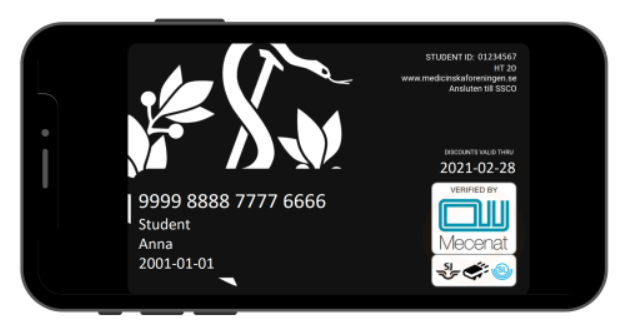
5 practical things to get done during your 1st week in Sweden
As much fun as discovering a new city is, there are always some other less “exciting” things that need to be sorted out when moving to a new country. Of course, some of these are more “official” than others, but I thought it would be useful to include also ones that are just practical and good to know early on in your time in Stockholm. So here are 5 things that I’d consider getting done in the very first weeks after arriving in Sweden.
Start applying for a personnummer
You might be wondering what even is a personnummer, or personal identity number as it’s called in English, and why do you need it? In short, it is the most important number to have if you are living in Sweden for more than 12 months. It is useful for opening a bank account in Sweden, signing a phone contract, becoming a member of loyalty programmes at stores and many other things. To get a personnummer, you need to apply through the Swedish Tax Agency called Skatterverket.
Applying for it, however, is probably one of the more tedious processes that most new students in Sweden have to go through. On the Skatterverket website you can see the most up to date info on the specific requirements for applying as these may vary between countries. I’d definitely suggest checking these even before coming to Sweden as you may need some documents, which are much easier to get when you’re still at home. You can actually already start the process online using their “Moving to Sweden” e-services.
Once you’re here, you’ll most likely have to visit one of their service centres to submit the documents in person. As the processing times seem to be getting longer and longer, I would get started with it sooner rather than later, because after getting your personnummer, there comes applying for the Swedish ID card, which is another process altogether. For a more thorough overview on the personnummer and the Swedish ID card, make sure to visit the official Skatterverket website and read this post by one of our former DAs Ines.
Become a MF member
Medicinska Föreningen (MF) is the student union at KI, which consists of different committees who organise everything from the orientation week to sports activities throughout the school year to Friday night pubs and everything in between. To get all the benefits of being a student in Stockholm, you should become a MF member as earlier as you can.

This might not seems to be an urgent task on the outside, but because of certain benefits e.g. collecting days in the SSSB queue where you can find affordable student housing, I highly recommend getting it done ASAP. SSSB is the most likely housing provider to students across Stockholm, not just at KI, and has a points-based system for applying to their accommodations. To read more about how SSSB works, I’d recommend checking out Naw’s post about her experience with finding an apartment through SSSB. But essentially the more days you have in the queue, the better your chances of getting the housing option you want.
Figure out the best public transport options for you
Stockholm is by far the largest city that I’ve ever lived in, so it took me a good while to get used to all the things that come with living in such a massive and busy place. And what helped me personally the most was actually looking around on Google Maps and finding different places where I wanted to go and looking at the options (and then of course trying these out). So here are a few examples of how useful that can be!
If you are looking to visit Djurgården where most of the big museums in Stockholm are located, you might initially opt for taking a bus or a tram there, but depending on where you are in the city, it might be much smarter to actually catch a ferry there. Yes, the ferry is a valid option when travelling by public transport here. So for me to get from Strix to Skansen (open-air museum in Djurgården), the best option is taking the metro to the city center (to Kungsträdgården more specifically) and then getting on a ferry, which docks just a few minutes away from the metro station.
Another surprise for me was also how much I love that I can get the metro for going home, as the buses here 1) don’t always show up & 2) get stuck in the afternoon traffic, which is 10 times worse here compared to anywhere I’ve lived before. All in all, I’d recommend taking some time to use either the SL app or Google Maps and get yourself a bit more familiar with what options you have from your home to KI and also to all the other exciting places around Stockholm.
Also check out Inika’s post for more super useful tips on how to navigate Stockholm’s public transport system.

Find your “home” shop & local PostNord delivery point
There probably will be a small corner store quite close to your home, but most likely you’ll need to find another place to do the big weekly shop, but that is not to say that these small stores won’t come in handy. Of course, it’s always nice to have an option nearby where you can grab a bite or quickly buy something on the way home, but often times these shops are also the place where packages get delivered to.
At home, I was used to either having the package delivered to the house, sometimes even just left at the front door, or having to go to the post office or one of these self-service drop-off points to pick it up. So this wasn’t something that I had thought much about before I had a letter in my mailbox saying to go to this weird address quite near to where I lived to pick up my new water bottle that I had ordered in Sweden. So when I got there I realised, it’s just my corner store, and there’s a special PostNord counter inside, which I just hadn’t noticed before then. That just goes to show how small differences in the way things are done are good to know beforehand. And maybe now that you’ve read this blog you wouldn’t be surprised when you get this letter in the mail.
Get a Swedish phone number
This tip is at the very end, because not everyone will need to get a Swedish phone number, and usually this process is also easier after you’ve got a personnummer. But I thought I’d still include it for mainly two reasons:
- If you’re outside of the EU, then often the prices of overseas calls and data plans cost so much more than getting a new SIM card and a decent phone plan with a Swedish provider would.
- If you’re looking to open a Swedish bank account and use services like Swish and BankID (which funnily enough is not used just for banking, but for logging into almost everything), then this will be much, much easier with a Swedish phone number!
One of the easiest ways to get a Swedish phone number is to buy a prepaid SIM card from a local Pressbyrån, which is this chain of convenience stores you’ll see almost everywhere here, but most often near train or metro stations. To finish setting everything up, it just took a simple registration of my SIM card and the new number on their website and then picking a phone/data plan. Of course, there are also other mobile operators such as Telenor, Hallon or Tre that you might want to check out for their different plans and prices.
The first weeks in a new city, let alone a new country, can be quite a busy time, but to make life easier later on, it’d be good to get some less-exciting parts sorted ASAP. The future you will be grateful! And, of course, keep in mind to have fun along the way! ?

Karolina - Translational Physiology and Pharmacology
I am Karolina and I am a digital ambassador and a blogger for the Master’s Programme in Translational Physiology and Pharmacology here at KI. I was born and raised in Estonia, but for the past five years I have lived in the UK where I studied biomedical sciences with a focus on pharmacology. Outside of school I like baking with friends as well as doing water sports. When the weather starts to get warmer, I look forward to kayaking through Stockholm's world-famous archipelago.

1 comments